-
Running Shoes: Start Off on The Right Foot!
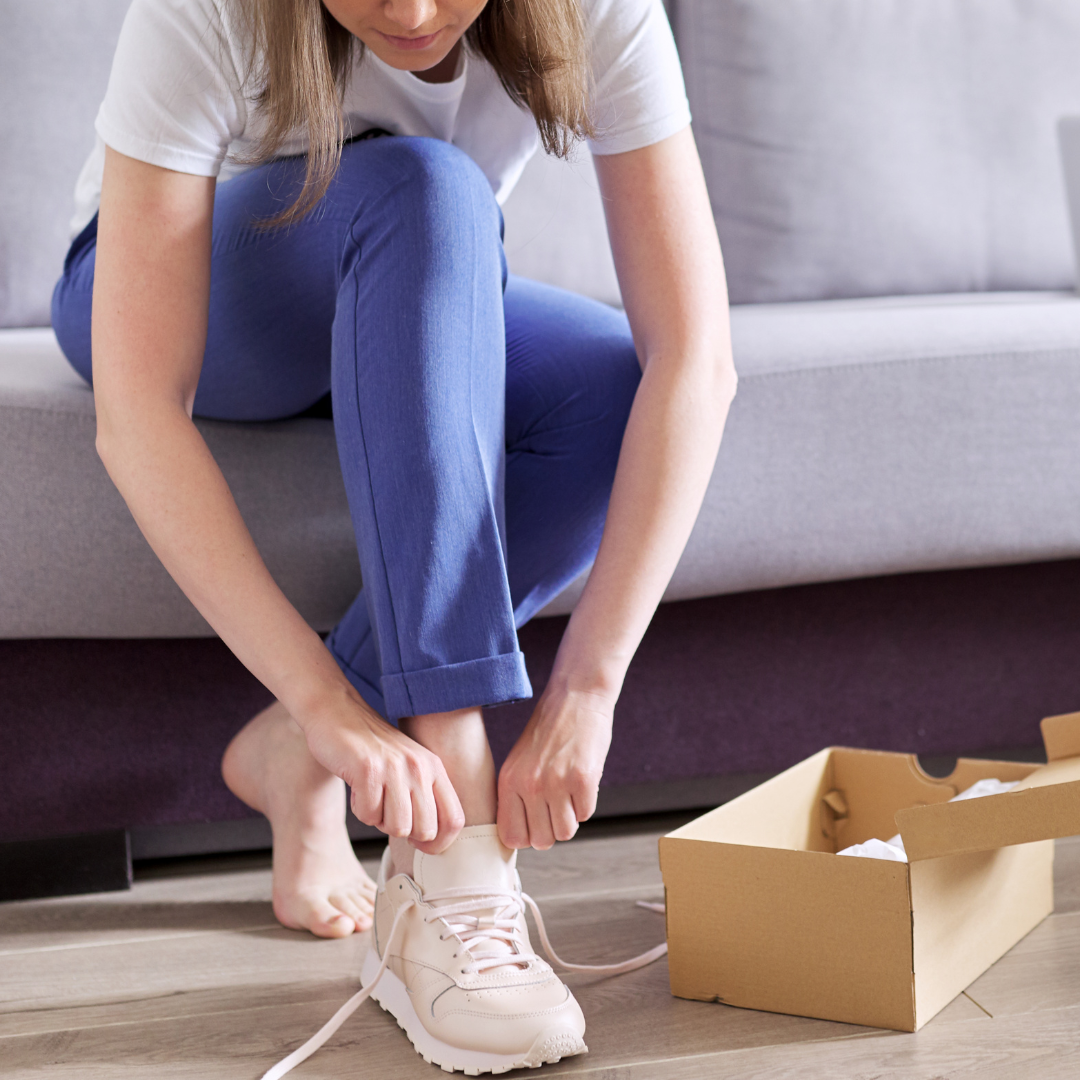
If you run, you need the right footwear. Fortunately, Kentlands Foot and Ankle Center is well-prepared to support your footwear needs. Before you decide which shoe is right for you, let’s break down some common tips that can improve performance and ensure sustainability.
Here are some Do’s and Don’ts to follow before purchasing new running shoes
DON’T run in old, beat-up shoes. Runners need to be prepared, and footwear is no exception. To keep shoes fresh, try to have two pairs on hand and alternate them. The wear and tear from repeated motions erodes the support of a running shoe, which might increase your risk of injury.
DO invest in a pair of good socks and laces. The right pair of socks will provide valuable cushioning and even help with sweating. Laces with ‘bumps’ along them might cost a little more, but they don’t slide around in your shoes.
DON’T ignore the unique traits of your feet. Do you have high, flat, or neutral arches? Do your ankles roll when you run? These are the kinds of details our experts can help you with, and knowing about them beforehand will help you choose the right shoes for you.
DO consider custom orthotics. These can enhance your running game by helping to prevent injuries before they occur. And we can help you find the perfect fit! At Kentlands, there are no more clunky plaster casts or lengthy waiting times. Instead, we employ our new 3D laser scanner to perform a clinical examination of your feet. In just 10 seconds, this technology takes thousands of measurements and provides the perfect custom fit.
We’re big fans of running, and we know just how much it can benefit your life. Still, putting safety first is important. Dr. Jon Sherman is an acknowledged expert in treating sports injuries, and he has served as a consultant for the Marine Corps Marathon. He’s well-equipped to help improve your athletic performance and keep your feet healthy as you chase your goals. To schedule a comprehensive foot examination with Dr. Sherman at our Gaithersburg office, please call 301-330-8971 or contact us online today.
-
Good News for People with Chronic Heel Pain!
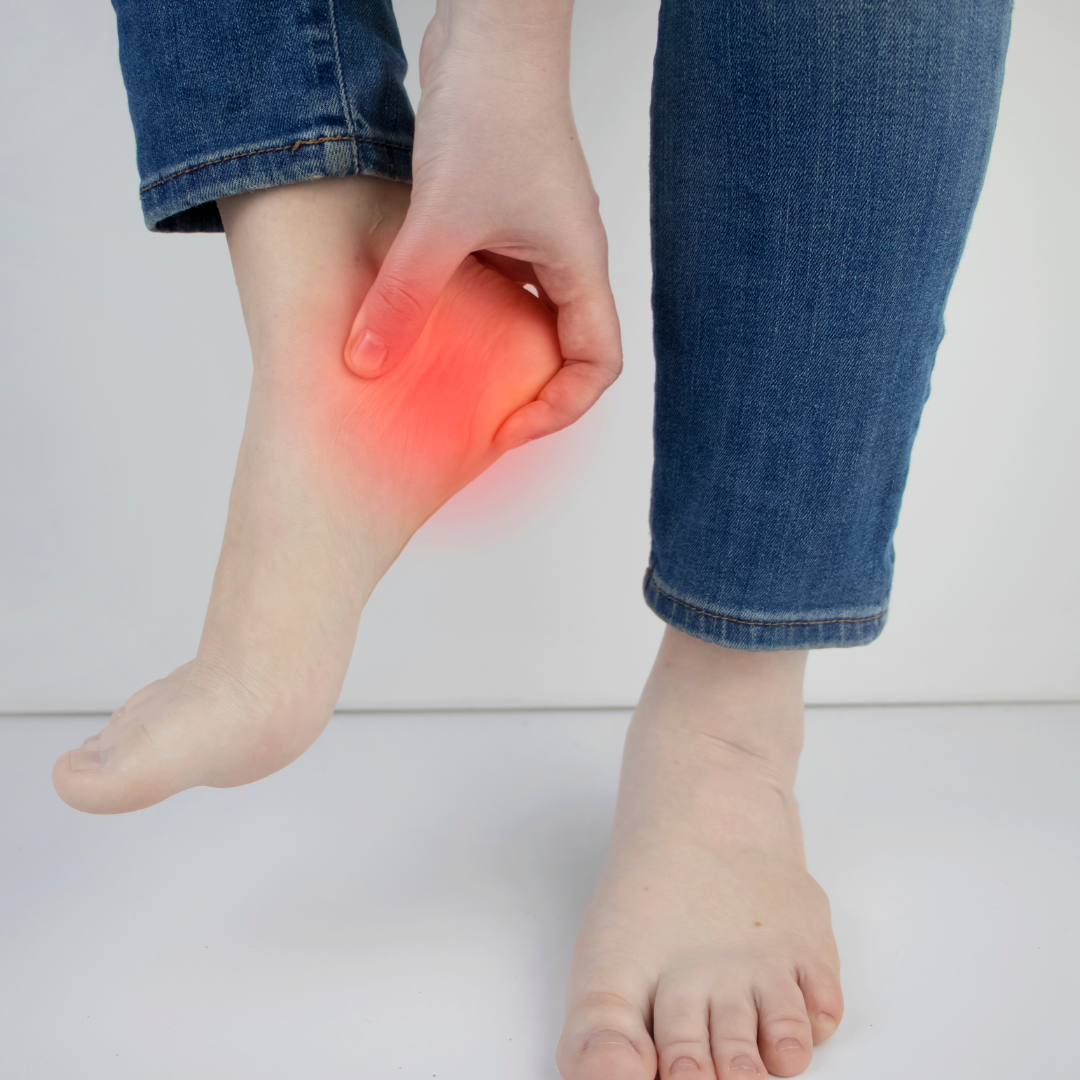
A twitch of pain somewhere in your foot is one thing – brief and tolerable. Thank goodness it goes away.
Heel pain that doesn’t go away is an entirely different matter. We’re talking about the heel pain that greets you like a knife when you step out of bed every morning. The kind of intense pain that makes you cry out, perhaps with a few choice words you didn’t mean to say. This kind of pain requires attention from Kentlands Foot and Ankle Center’s board-certified podiatrist, Dr. Jon M. Sherman, because it’s not likely to get better on its own.
Plantar fasciitis, explained!
The medical term for chronic heel pain is plantar fasciitis. Any medical word with the suffix “-itis” means “inflammation.” In this case, it’s the plantar fascia that’s inflamed. The plantar fascia is a large, thick ligament that runs along the bottom of your foot, connecting the calcaneus (heel bone) to your toes. It’s easily inflamed under some circumstances:
- You have a job that requires you to be on your feet for much of the day, such as a waiter, nurse, or urban mail carrier.
- You’re a runner or walker who’s recently increased their mileage, pace, or distance.
- You participate in other athletic activities, such as ballet, that put a lot of stress on your feet.
- You’re carrying some extra pounds, which puts undue stress on your feet.
- You have pre-existing issues with your foot anatomy, such as flatfoot or high arches.
- You’re over 40: The older you are, the more likely you will develop plantar fasciitis.
The pain you don’t have to live with
Fortunately, we have many effective treatments that soothe the pain of plantar fasciitis. Dr. Sherman will likely start with conservative approaches, including taking a break from any activity that hurts, performing stretching exercises, icing, taking anti-inflammatory medications, wearing custom orthotics, and getting steroid injections. Often, the best treatment involves a combination of all these.
Other treatment options include non-invasive shockwave therapy (ESWT, laser light therapy/cold laser, and physical therapy. Surgery for plantar fasciitis is a possibility but not a common one.
The key to successful plantar fasciitis treatment is getting it promptly. Don’t wait. We encourage residents of Montgomery County to consult Dr. Sherman sooner rather than later for a full examination and assessment of their heel pain. Call 301-330-5666 or contact us online for an appointment at our Gaithersburg podiatry office.
-
Regular Exercise Can Prevent Falling: 5 Ways to Make It Easier
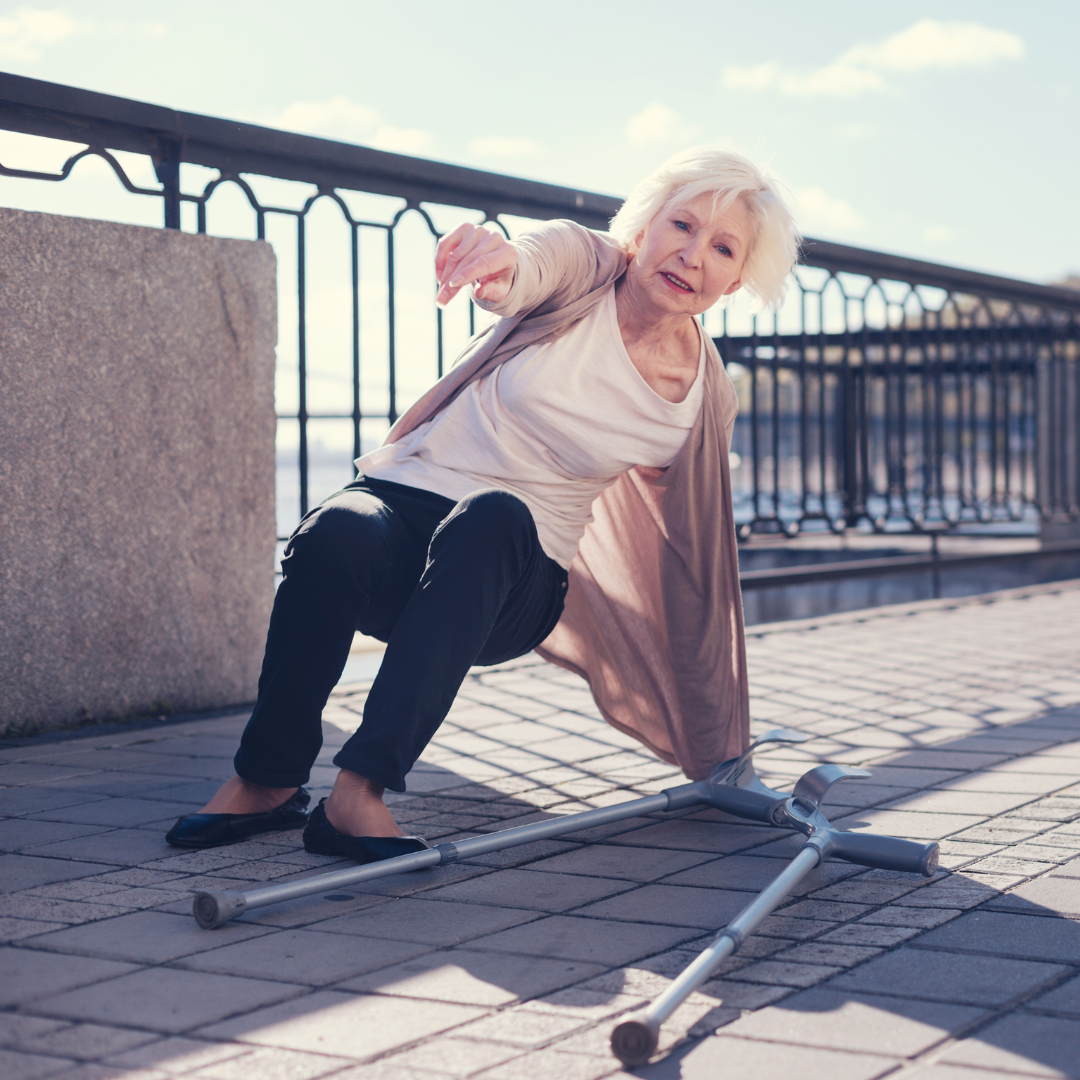
If you’re alive on this planet, you know that doctors always recommend regular exercise for optimal health. Exercise improves heart function, keeps unwanted pounds off, wards off disease, and even calms symptoms of depression and anxiety. But if you’re a senior citizen, there’s another benefit of exercise you may not have thought of:
Regular exercise can help prevent dangerous falls.
If you’re someone who exercises already – great. You’re better off than the 30-40% of people over 65 and 50% of people aged 80 and up who take a fall every year. If you don’t exercise, starting an exercise program may seem daunting. But, it doesn’t have to be.
Here are five ways to get motivated to strengthen the muscles that help you sit, stand, and walk confidently without dangerous hesitations or wobbles:
- First things first – fix your foot or ankle pain: Exercise may be difficult, painful, or downright impossible if it causes pain. Let our board-certified podiatrist, Jon M. Sherman, treat your toe arthritis, nerve pain, or plantar fasciitis with state-of-the-art treatments and therapies, including custom orthotic inserts and targeted laser therapy. Dr. Sherman can also perform a fall prevention risk assessment.
- Do something you like: Walking is easy and requires no special equipment except a great pair of shoes. If walking isn’t appealing, there’s swimming, tai chi, and yoga.
- Start slowly: You risk injuring yourself if you exercise long and hard from the get-go.
- Exercise with a friend: An exercise partner can be very helpful to keep you motivated.
- Take advantage of Montgomery County resources: Call your local senior center or YMCA to inquire about balance and exercise classes. Many facilities offer transportation to and from, making it easier to keep exercising.
Commit to exercise this Falls Prevention Awareness Month! For a foot exam or personalized fall prevention assessment, contact Kentlands Foot & Ankle Center in Gaithersburg at 301-330-5666 or request an appointment with Dr. Sherman online.
-
Swift Steps and Setbacks 3 Common Foot and Ankle Injuries in Women’s Soccer
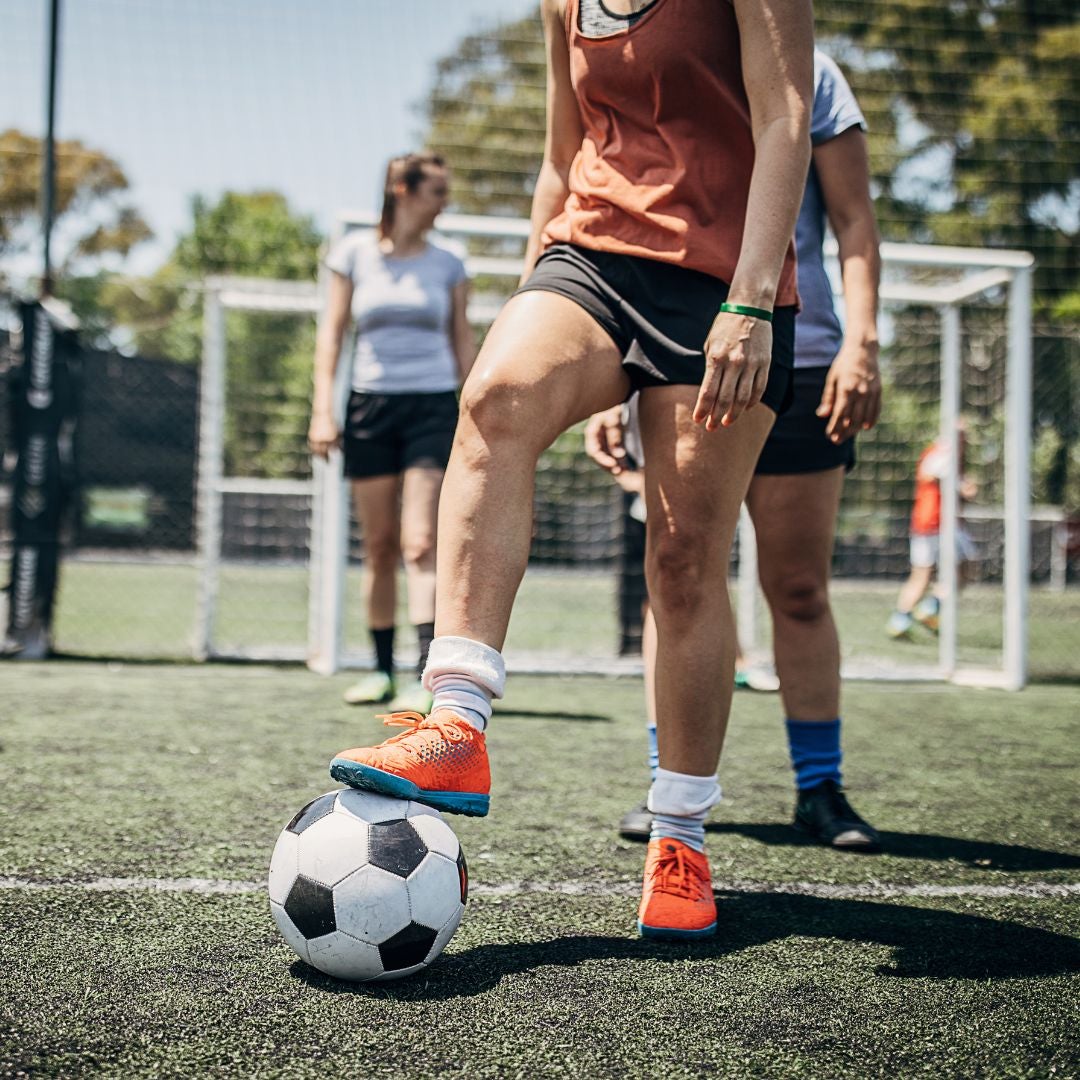
In women’s soccer, both at the amateur and professional levels, players are prone to various foot and ankle injuries due to the dynamic nature of the sport and the repetitive stress placed on these areas during matches and training.
Here are 3 common foot and ankle injuries prevalent in women’s soccer:
1-Ankle Sprains
Ankle sprains are among the most prevalent injuries in women’s soccer. They occur when the ligaments surrounding the ankle joint are stretched or torn, usually as a result of sudden changes in direction, collisions with other players, or landing awkwardly after a jump. In amateur and professional contexts, the intensity and speed of the game can increase the risk of ankle sprains. Female players, in particular, might be more susceptible due to differences in lower limb alignment and hormonal factors affecting ligament laxity. Ankle sprains can range from mild to severe, with swelling, pain, and limited range of motion being common symptoms. Management includes the R.I.C.E. protocol (rest, ice, compression, elevation), followed by physical therapy to restore strength and stability. Preventive measures include balance training, proprioceptive exercises, and using proper footwear.
2-Achilles Tendonitis
Achilles tendonitis is another prevalent injury in women’s soccer. The Achilles tendon connects the calf muscles to the heel bone and is subjected to significant stress during sprinting, jumping, and sudden stops. Overuse and improper training techniques can lead to microtears and inflammation in the tendon. Players may experience pain, stiffness, and swelling in the back of the ankle. In the professional sphere, rigorous training schedules and frequent matches can exacerbate the risk of Achilles tendonitis. Treatment involves rest, targeted stretching and strengthening exercises for the calf muscles. In severe cases, immobilization and even surgical intervention may be necessary. Proper warm-up routines, gradual increases in training intensity, and adequate footwear can help prevent this injury.
3-Metatarsal Stress Fractures
Metatarsal stress fractures are common in women’s soccer due to the repetitive impact and running involved in the sport. These fractures occur when the bones in the forefoot (metatarsals) experience repeated strain, often from overuse without adequate rest. In both amateur and professional contexts, female soccer players can be at risk due to the high number of games and training sessions. Players with stress fractures may feel localized pain, swelling, and discomfort during activity. Treatment requires rest, often with the use of protective footwear or even a walking boot. Gradual return to play and modifications in training intensity are necessary to prevent re-injury. Ensuring proper nutrition and bone health, as well as monitoring training load, can play a crucial role in preventing metatarsal stress fractures.
Foot and ankle injuries are common in women’s soccer, both at the amateur and professional levels. Ankle sprains, Achilles tendonitis, and metatarsal stress fractures are particularly prevalent due to the demands of the sport, player-specific factors, and the intensity of training and matches. Preventive measures, including targeted exercises, adequate rest, proper warm-up routines, and attention to training load are essential to minimize the occurrence of these injuries and maintain the long-term health and performance of female soccer players.
Whether you or a member of your family have experienced an injury while participating in a sport, or leisurely walking, contact Kentlands Foot and Ankle Center podiatrist Dr. Jon M. Sherman at our Montgomery office. Please call our office today, at 301-330-5666 to schedule your appointment or visit our website.
-
5 Foot Safety Tips for Summer
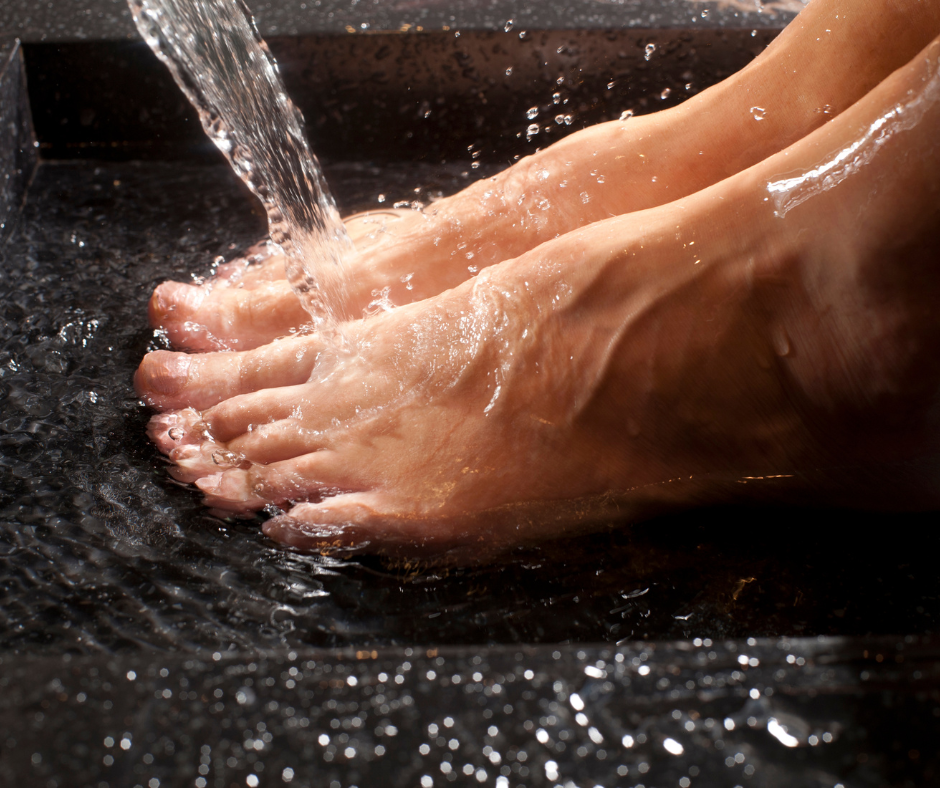
Summer is in full swing, and we hope you’re having a great time! An unfortunate consequence of fun summer plans is typically a lot of wear and tear on our feet and ankles. The risks of infection and injury rise in warmer weather. What can you do to stay safe and healthy this summer? Here are 5 foot safety tips to keep your feet feeling great for the rest of the season.
1-Stay Hydrated and Cool
Looking to enjoy a walk or hike? Save your outdoor exercise for the cooler times of the day. Take a break if you need one. Be sure to wear comfortable, lightweight clothing and to stay well-hydrated.
2-Wear The Right Shoes
Make sure your footwear is in good condition. Like your tires, treads should be deep enough to offer good traction. Cushioning and support should make feet feel comfortable. If you’re experiencing discomfort, particularly if you notice morning heel pain characteristic of plantar fasciitis, you should see your podiatrist for an examination, diagnosis, and treatment as soon as possible.
3-Use Sunscreen
You’ve probably heard it a hundred times, but it is extremely important. There’s nothing different about the skin on feet and ankles! This part of your body is as vulnerable to skin cancer as anywhere else.
4-Beware of Fungus
If you’re headed to the salon for a pedicure, take steps to avoid toenail fungus, athlete’s foot, and other infections. Choose an establishment known for excellent hygiene practices. Consider bringing your tools. Make sure that soaking basins are lined with disposable liners and that they are replaced after every client. Never let the tech use a razor or grater on your feet. These can cause minor nicks and cuts that allow pathogens to enter the body.
5-Eat Healthy
Going to a summer barbecue? Skip the cheeseburgers and macaroni salad. Focus on lean protein sources like chicken, fish, tofu, fresh summer produce, and plenty of water.
Schedule a comprehensive foot examination with Kentlands Foot and Ankle Center podiatrist Dr. Jon M. Sherman at our Montgomery office. Please call our office at 301-330-5666 to schedule your appointment.
-
3 Do’s and 3 Don’ts for Runners

You do not need to run every day of the week to benefit your health. Running just a few minutes each day may be good for you. Research shows it may even extend your life. No matter where you run, putting your safety first is vital. Below, our team of experts is sharing Dos and Don’ts for runners and outdoor athletes.
Do: Whether you’re an experienced runner or just getting started, begin the season by visiting your foot doctor.
With years of experience, including a hospital residency, your podiatrist is a medical expert and the best-qualified doctor to examine your feet, diagnose any existing or potential issues, and offer expert care.
Do: Build your endurance slowly.
Start with moderate length and low-speed runs, and work your way up to long runs at faster paces. Keep a journal to help you record your progress. It will help protect you from shin splints and other foot and ankle injuries. It will also give you something to work toward.
Do: Check out your route in advance and run on smooth, well-paved roads.
If you take a spill and can’t resolve the discomfort with over-the-counter medication and at-home RICE (rest, ice, compression, elevation) treatment, see your podiatrist as soon as possible.
Don’t: Don’t run in sneakers that have logged over 50 miles or are over a year old.
Be sure your footwear offers excellent cushioning and support. Remember that your foot size changes over the years.
Don’t: Don’t run with traffic if you are running in your neighborhood.
One of the most basic road rules is to drive/bike with traffic and run against it. You can only go so fast and be aware on two feet; increase your safety by seeing danger as it’s coming.
Don’t: Don’t overdo it.
Running is great, but don’t run yourself into the ground. Listen to your body; if you’ve pulled something, have shin splints, or have any other significant pain, it won’t help to pop a painkiller and run through it. Stop for a break when you need to, and get back up again eventually.
Schedule a comprehensive foot examination with Kentlands Foot and Ankle Center podiatrist Dr. Jon M. Sherman at our Montgomery office. Please call our office at 301-330-5666 to schedule your appointment.
-
Arthritis Awareness Month
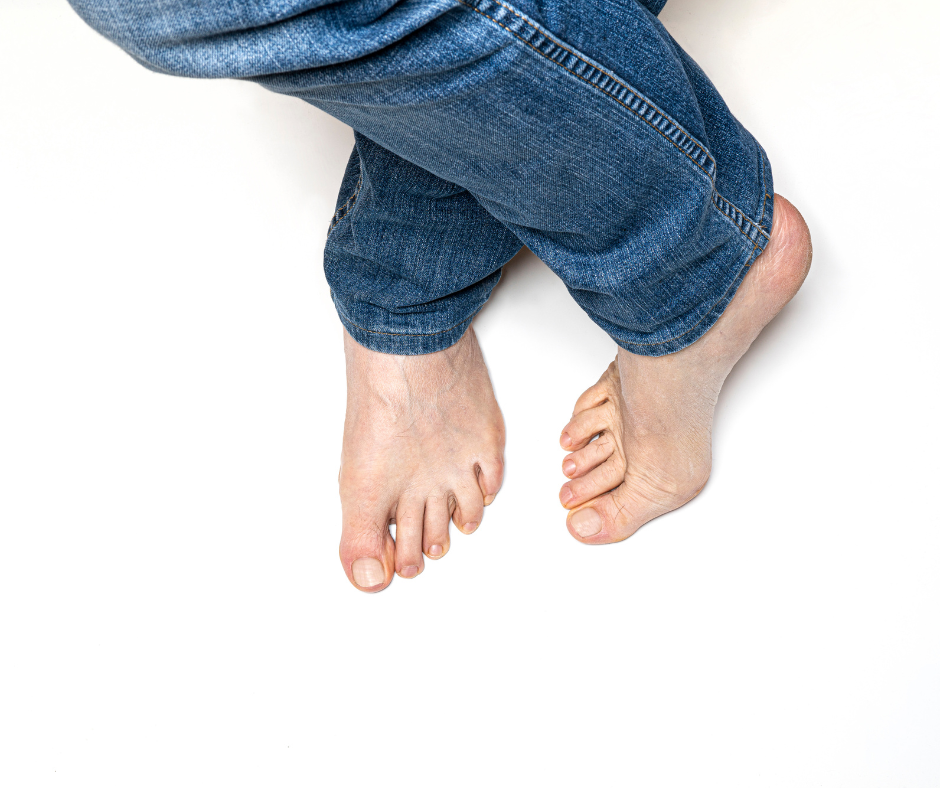
Arthritis is one of the most widespread health conditions in the United States. Arthritis occurs when joints are swollen or tender and can affect people of all different ages. The first steps in overcoming the challenges of arthritis are understanding the condition and knowing there are many resources to help. Below you will find fast facts about arthritis, signs and symptoms, prevention tips, and helpful resources.
Facts About Arthritis
- More than 40 million Americans have been diagnosed with arthritis.
- There are more than 100 forms of this crippling disease.
- It affects an estimated 53 million adults and 300,000 children.
- Experts believe the number of people diagnosed with arthritis will grow as our nation’s population ages.
- Arthritis is common among people with other chronic conditions including obesity, diabetes, and heart disease.
- The most common types of arthritis include:
- Osteoarthritis
- Rheumatoid Arthritis
- Psoriatic Arthritis
- Fibromyalgia
- Gout
Common Signs Associated With Arthritis
Recognizing the symptoms can help you get the correct diagnosis. Arthritis symptoms can include:
- Difficulties with moving and performing daily tasks
- Pain
- Stiffness
- Swelling
- Redness
- Decreased range of motion
Ways To Prevent Arthritis
- Get Moving. Walking is a fantastic way for people with arthritis who live in rural areas to be physically active. For those uncertain about walking, proven programs such as Walk With Ease can help people get started.
- Build Connections. The Arthritis Foundation can help you find and build support for your journey during Arthritis Awareness Month with tips on nationwide events, treatment, and diet.
- Protect Your Joints. Avoid holding one position for too long or holding a position that puts extra stress on joints.
- Manage Your Weight. Maintaining a healthy diet consisting of many vegetables, some fruits, and whole grains has been proven to support overall well-being.
- Talk With Your Doctor. Advocate for yourself and make sure that you get the care you need.
When To See A Podiatrist
Podiatrists are a part of the care team when joint pain occurs in a patient’s feet or ankles. At Kentlands Foot and Ankle Center, we strive to provide the best care to our patients. Board-certified podiatrist Dr. Jon M. Sherman uses advanced technology and treats a variety of patients. To schedule an appointment, please call our Montgomery County office at 301-330-5666 or visit our website for more information.
-
Hello April– and National Foot Health Awareness Month!
 Our team of specialists strive to educate and support our patients with all issues related to the feet and ankles. Your feet work hard to support your body weight and take you wherever you want or need to go throughout the day, yet they are easily the most neglected part of the human body. This month our team wanted to do something special to raise awareness around foot health.
Our team of specialists strive to educate and support our patients with all issues related to the feet and ankles. Your feet work hard to support your body weight and take you wherever you want or need to go throughout the day, yet they are easily the most neglected part of the human body. This month our team wanted to do something special to raise awareness around foot health.These 10-foot facts everyone should know include facts about the anatomy of our feet, footwear, and foot care!
Foot Anatomy Facts
- Your feet have 26 bones, 33 joints, and more than 100 muscles, tendons, and ligaments.
- There are approximately 250,000 sweat glands in the feet, and on average, they excrete around 1 cup of moisture in one day. Wearing socks made of natural fibers, like cotton and wool instead of synthetic materials will help to create a more breathable environment.
- The 52 bones in your feet make up about one quarter of all the bones in your body.
Footwear Facts
- Wearing properly fitted footwear is very important to your foot health. If you are unsure of your size, you can have your feet measured before purchasing shoes. In addition, always try them on. Make sure to leave 1 inch or about a finger’s width between the longest toe and end of the shoe.
- Wearing heels can shorten or tighten your calf muscle. A tight calf can then lead to Achilles tendonitis.
- A pair of Custom foot orthotics can help to support, stabilize, and balance your feet, ultimately improving foot alignment and gait patterns.
- It is recommended to replace an orthotic every 2-3 years.
Foot Care Facts
- Wash your feet daily and dry well in between the toes. Finish with daily applications of a urea-based moisturizer. This simple practice helps to reduce bacterial and fungal load and keep the skin’s integrity at its best. Your skin is the first line of defense against infections.
- Trim your toenails straight across and not too short. This helps to reduce risk of breaks in the nail as well as Ingrown toenails.
- Walking is the best exercise for your feet. It also contributes to your general health by improving circulation, contributing to weight control. and promoting all-around wellbeing.
If you are experiencing chronic foot pain or discomfort in your lower extremities, call our Montgomery office at 301-330-5666 and schedule an appointment with our board-certified podiatrist Dr. Jon M. Sherman or visit our website for more information.
-
March is National Nutrition Month

At Kentlands Foot and Ankle Center, each year during March, we celebrate National Nutrition Month, which is a nutrition education and information campaign sponsored by the Academy of Nutrition and Dietetics. National Nutrition Month invites everyone to learn about making informed food choices and provides the basis for developing sound eating and physical activity habits. Having a balanced eating pattern is important since no single food or food group provides all the nutrients needed for good health. A healthy lifestyle benefits your mind and body, but did you know it helps your feet too?
One of the most common causes of heel pain is inflammation. The resulting condition, plantar fasciitis, in combination with other inflammatory conditions like arthritis and painful arches, is aggravated by eating certain foods such as:
- Foods made with white flour like desserts, snacks, and pasta.
- Certain vegetable oils, including corn, soybean, and sunflower oils.
- Foods high in trans-fats and sugar
- Animal protein sources that are high in saturated fats, such as red meat
- Opt for a Healthy Diet to Benefit Foot Health
Celebrate National Nutrition Month throughout the year with these easy additions:
- Eat a variety of nutritious foods.
- Create tasty foods at home.
- Try different fruits and vegetables depending on what time of year it is
- Choose ingredients with different textures and colors for a variety
- Make Physical Activity Part of Your Day
- While exercise may sound intimidating to some people, it doesn’t have to be! Any type and amount of activity are better than none. To “move more and sit less,” it’s helpful to find activities that you find enjoyable. The recommendation for adults is 150 minutes or more of moderate-intensity physical activity each week.
If you are experiencing chronic foot pain or discomfort in your lower extremities, call our Montgomery office at 301-330-5666 and schedule an appointment with our board-certified podiatrist Dr. Jon M. Sherman or visit our website for more information.
Please note that our office hours are currently Monday, 10am-5:30pm, and Tuesdays and Thursdays, 10am-5pm. For new or current patients who do not want to come into the office, we are also offering Telehealth video visits. To schedule a Telehealth visit, please call our office.
-
Maintain A Healthy Heart
 February isn’t just for lovers. American Heart Month also reminds us to take care of our hearts and consider our risk factors. In honor of American Heart Month, our team of specialists are dedicating this post to improving heart health among our patients by sharing 5 fun activities you can participate in to maintain a healthy heart.
February isn’t just for lovers. American Heart Month also reminds us to take care of our hearts and consider our risk factors. In honor of American Heart Month, our team of specialists are dedicating this post to improving heart health among our patients by sharing 5 fun activities you can participate in to maintain a healthy heart.5 Fun Activities to Maintain a Healthy Heart
Get Moving. Looking to boost your heart health without going for a jog? Try aerobic physical activities, or opt for another cardio option like a neighborhood walk with your family. Whatever gets your body moving and your heart pumping! To get the ball rolling, here are some moderate-intensity exercises for your heart and lungs that you can do to improve heart health:
- Brisk walking
- Play Tennis
- Swim or Participate in Water Aerobics
- Join A Cycling Class
- Go On a Hike
Cuddle. Looking to reduce your stress levels? Cuddling with a pet or a loved one has been shown to reduce stress levels, which is one of the leading causes of heart disease. During American Heart Month, give your pet extra cuddles, take a walk for some aerobic physical activity, or adopt a furry friend. Your heart and theirs will definitely appreciate it!
Have A Piece of Dark Chocolate Before Bedtime. There is a study showing that all kinds of chocolate may help lower your risk of heart problems. If dark chocolate is your favorite sweet treat, you’re in luck. Dark chocolate contains less sugar, a higher ratio of cocoa, and more antioxidants. Eating a piece of dark chocolate may even help you balance your cholesterol!
Have A Good Laugh. When was the last time you laughed so hard, you began to tear-up? There is research showing the greater your sense of humor is, the lower the risk you have of developing heart disease. Laughing at humorous things also helps battle against distressing emotions like depression, anxiety, and anger, all of which increase the likelihood of heart problems. The saying “Laughter is the best medicine” truly does hit home with this heart healthy activity.
Don’t Skip Breakfast. Breakfast can be the most common meal of the day to skip. We have all had those early mornings with no energy or appetite. A study of over 4,000 participants found that those who get less than five percent of their daily calories from breakfast (100 of the 2,000 recommended for women) were more likely to have clogged and damaged arteries than those who eat a high-energy breakfast (over 400 calories for women). So grab your fresh fruit, whip up some eggs, and improve your heart health with a tasty breakfast every day!
Schedule a comprehensive foot examination with Kentlands Foot and Ankle Center podiatrist, Dr. Jon M. Sherman, at our Montgomery office. To schedule your appointment, please call our office at 301-330-5666.
RECENT POSTS
categories
- Uncategorized
- Featured Articles
- Foot Disorders
- Broken Ankle
- Broken Toe
- Fracture
- Foot Health
- Foot Care
- Arthritis
- Foot Pain
- Skin Cancer
- Podiatry Appointment
- Custom Orthotics
- Podiatrist
- Diabetes
- Gout
- Heart Health
- National Nutrition Month
- National Foot Health Awareness Month
- Foot Safety
- Foot and Ankle Injuries
- Falls Prevention
- Chronic Heel Pain
- Shoes
- Laser Therapy
- Quoted
- Physical Therapy
- KeryFlex
- Sweat
- Summer Foot Care
- Sports Injury
- ESWT
- Fungal Toenails
- Bunion
- Plantar Fasciitis
- PinPointe Laser


